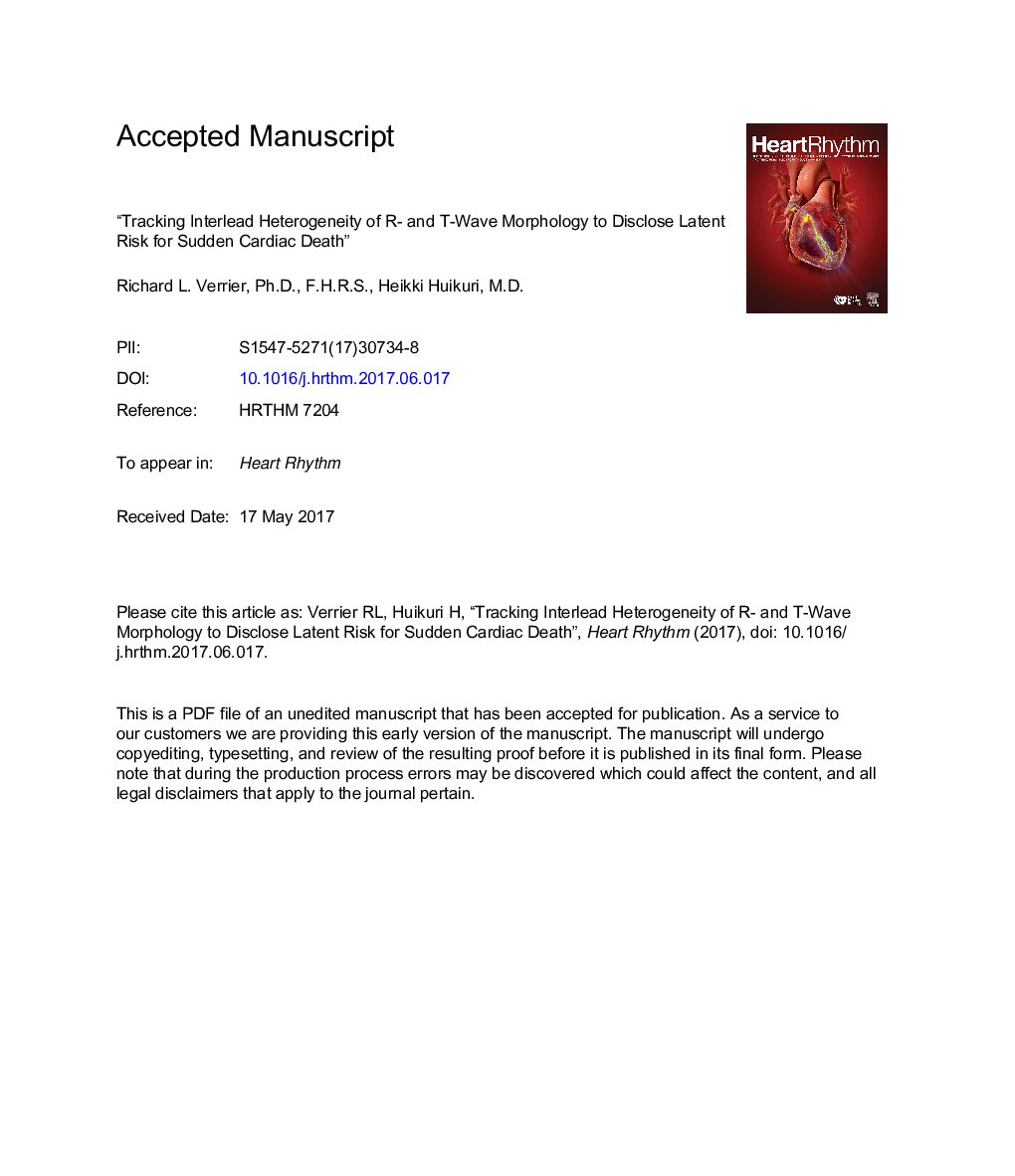| Article ID | Journal | Published Year | Pages | File Type |
|---|---|---|---|---|
| 5603050 | Heart Rhythm | 2017 | 39 Pages |
Abstract
Sudden cardiac death (SCD) due primarily to ventricular fibrillation claims 1.5 million lives worldwide each year. In 45%-50% of cases, it is the first manifestation of underlying heart disease. Traditional risk factors including smoking, hypertension, age, sex, as well as depressed left ventricular ejection fraction lack sufficient sensitivity and specificity to forewarn of impending life-threatening arrhythmias. There has been a decades-long search for electrocardiographic (ECG) markers of SCD risk. Several interval-based indices such as QT dispersion and Tpeak-Tend interval held initial promise but ultimately yielded mixed results. Recently, the focus has been on interlead heterogeneity of R- and T-wave morphology. The new approaches have involved advanced analytical tools including vectorcardiographic techniques and second central moment analysis of QRS-aligned templates to quantify heterogeneity of depolarization and repolarization waveforms. The results of current studies appear to be robust and worthy of further exploration. This review examines the electrophysiological underpinnings of heterogeneity-based risk assessment and provides an update of clinical techniques. We also discuss future directions whereby tracking heterogeneity may help to disclose latent risk for SCD not only in ECG recordings made at rest but also during ambulatory ECG monitoring and exercise tolerance testing.
Keywords
Related Topics
Health Sciences
Medicine and Dentistry
Cardiology and Cardiovascular Medicine
Authors
Richard L. PhD, FHRS, Heikki MD,
